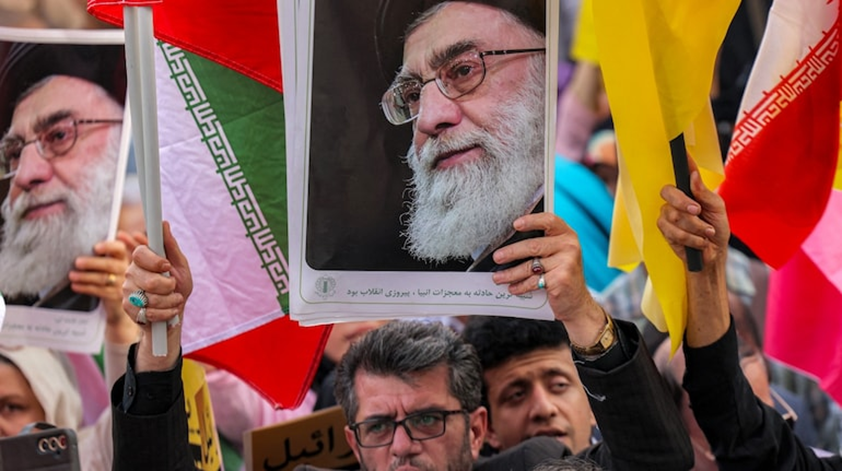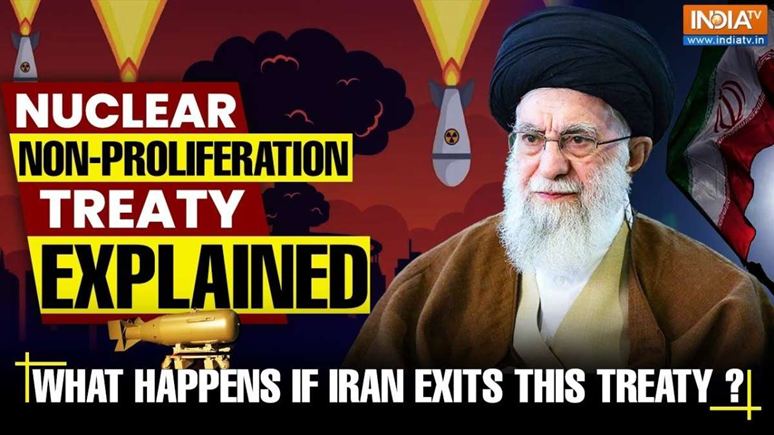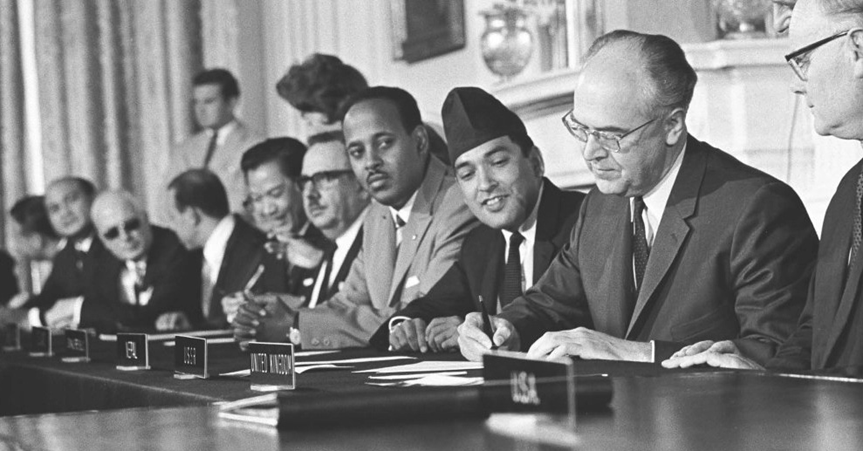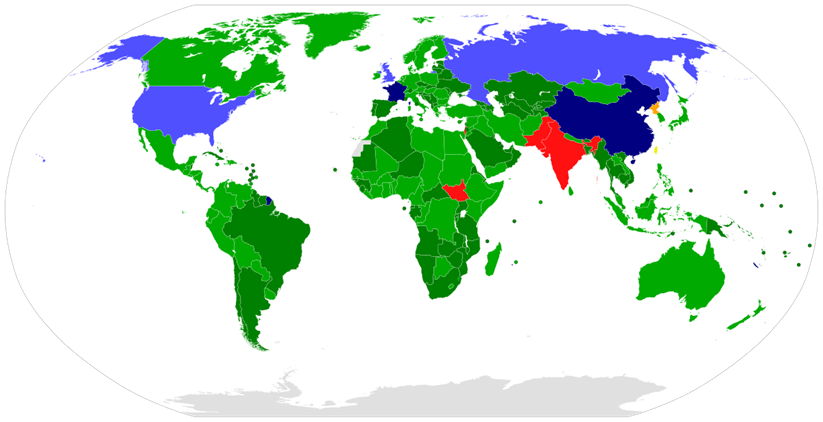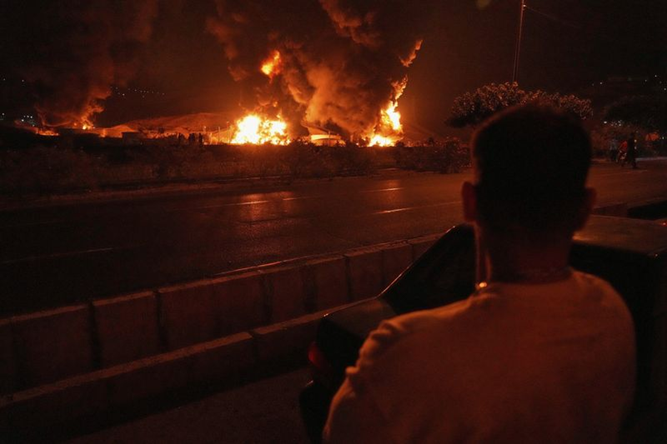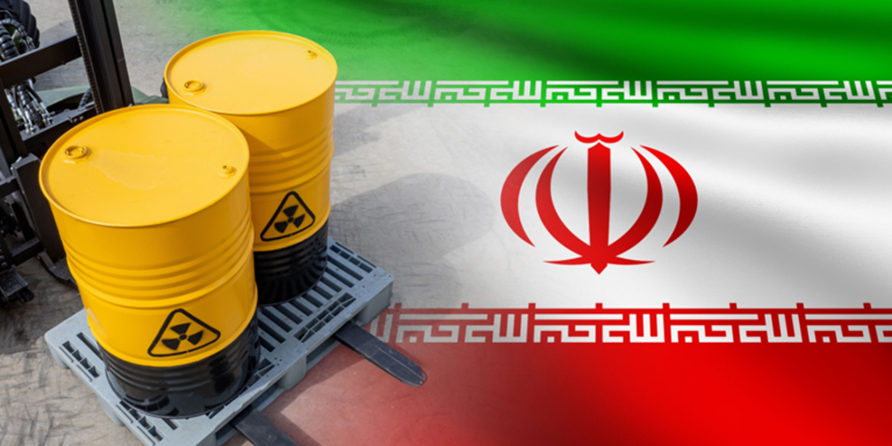Amid the heightened military tensions between Iran and Israel, the Islamic Republic said earlier this week that its Parliament was preparing a Bill to potentially leave the Treaty on the Non-Proliferation of Nuclear Weapons (NPT). The Israeli attack on Iran began on June 13, after Tel Aviv claimed that Iran was close to enriching weapons-grade uranium, effectively allowing it to build a nuclear weapon and pose, as per Prime Minister Benjamin Netanyahu, a “threat to Israel’s very survival”. Israel struck major nuclear facilities in Natanz and other Iranian cities.
What If Iran Chooses To Leave Nuclear Non-Proliferation Treaty ?
Why In News
- Amid the heightened military tensions between Iran and Israel, the Islamic Republic said earlier this week that its Parliament was preparing a Bill to potentially leave the Treaty on the Non-Proliferation of Nuclear Weapons (NPT).
- The Israeli attack on Iran began on June 13, after Tel Aviv claimed that Iran was close to enriching weapons-grade uranium, effectively allowing it to build a nuclear weapon and pose, as per Prime Minister Benjamin Netanyahu, a “threat to Israel’s very survival”. Israel struck major nuclear facilities in Natanz and other Iranian cities.
- Iran has denied the charges, saying it only plans to use nuclear power for peaceful purposes. It also vowed retaliation and launched ballistic missiles towards Israel. While at least 24 people have died in Israel, the death toll in Iran has crossed 600.
What Is The Nuclear Non-Proliferation Treaty?
- Signed in 1968 and entered into force in 1970, the international treaty is aimed at preventing the spread of nuclear weapons and technology, and promoting cooperation in the peaceful uses of nuclear energy, as well as disarmament. Soon after World War 2 (1939-45) which ended with the United States dropping atomic bombs on Japan, world powers raced to develop their own nuclear weapons. Simultaneously, efforts were also made to restrict the proliferation of nuclear technology.
- In 1953, the US government launched the Atoms for Peace initiative under President Dwight D Eisenhower, laying the groundwork for the International Atomic Energy Agency (IAEA).
- Eisenhower said in a speech: “The United States would seek more than the mere reduction or elimination of atomic materials for military purposes. It is not enough to take this weapon out of the hands of the soldiers. It must be put into the hands of those who will know how to strip its military casing and adapt it to the arts of peace”.
- International relations professor Joseph Nye wrote in an article in 1981 that the initiative’s biggest contribution was a safeguards system, where “nonweapons countries agree to file… regular detailed reports on nuclear civilian activities, and agree to allow international inspectors to visit their nuclear facilities to verify the reports and to ensure that there has been no diversion of materials from civilian to military purposes.”
- “The safeguards system is central to the basic bargain of the international regime in which other countries are assisted in their peaceful nuclear energy needs in return for their accepting the intrusion of safeguards and inspection,” he wrote. IAEA personnel now carry out such inspections.
- The treaty defines a nuclear state as one “which has manufactured and exploded a nuclear weapon or other nuclear explosive device prior to 1 January 1967.” These are the US, the UK, France, the Soviet Union (later Russia) and China.
- Today, 191 states have joined the treaty. India carried out its first nuclear tests in 1974 but has not signed it, and instead reiterated the principle of universality in preventing nuclear proliferation. Given the treaty’s exceptions for the permanent five members of the UN Security Council, and the arbitrary date chosen as the cut-off point to accommodate the P5 members, it has been criticised as discriminatory.
- Pakistan is also not a signatory. Israel, which is reported to possess nuclear weapons but has never confirmed it officially, has not signed it. North Korea signed it in 1985 but announced its withdrawal in 2003 after it was found to have built an enrichment program. It also expelled IAEA inspectors.
What Happens If Iran Leaves The NPT
- One of the treaty’s 11 articles mentions the procedure for leaving it. Article 10 speaks of withdrawal: “Each Party shall in exercising its national sovereignty have the right to withdraw from the Treaty if it decides that extraordinary events, related to the subject matter of this Treaty, have jeopardized the supreme interests of its country.”
- A notice of withdrawal must be given to other parties and the UNSC three months in advance, and “such notice shall include a statement of the extraordinary events it regards as having jeopardized its supreme interests.”
- Iran has been a signatory since 1970 – nine years before the Islamic Revolution saw the formation of a theocratic state. However, in its first such decision in almost 20 years, the IAEA’s 35-nation Board of Governors (which includes the P5, India, Bangladesh, Japan and Ukraine) recently said that Iran breached its non-proliferation obligations.
- The board’s resolution mentioned its “many failures to uphold its obligations since 2019 to provide the Agency with full and timely cooperation regarding undeclared nuclear material and activities at multiple undeclared locations in Iran”. In response, Iran said it always adhered to its safeguards obligations.
- Exiting the treaty raises two major concerns: first, it will keep Iran out of the IAEA’s purview and regular inspections, and second, it could set a precedent for other states to leave the global framework, weakening cooperation on a crucial subject. According to IAEA data compiled by Bloomberg, IAEA inspectors averaged 1.4 nuclear-site visits a day last year in Iran. Such access would end if Iran chooses to withdraw.
- However, remaining in the NPT does not necessarily signal an intention to build nuclear weapons, because signatories (like North Korea) have also developed weapons in the past. In this case, Iranian officials have repeatedly denied plans to do so, but the changing dynamics in the Middle East mean there are few guarantees. Some scholars, such as Nye, have said the treaty nonetheless served a purpose by slowing the pace of proliferation.
